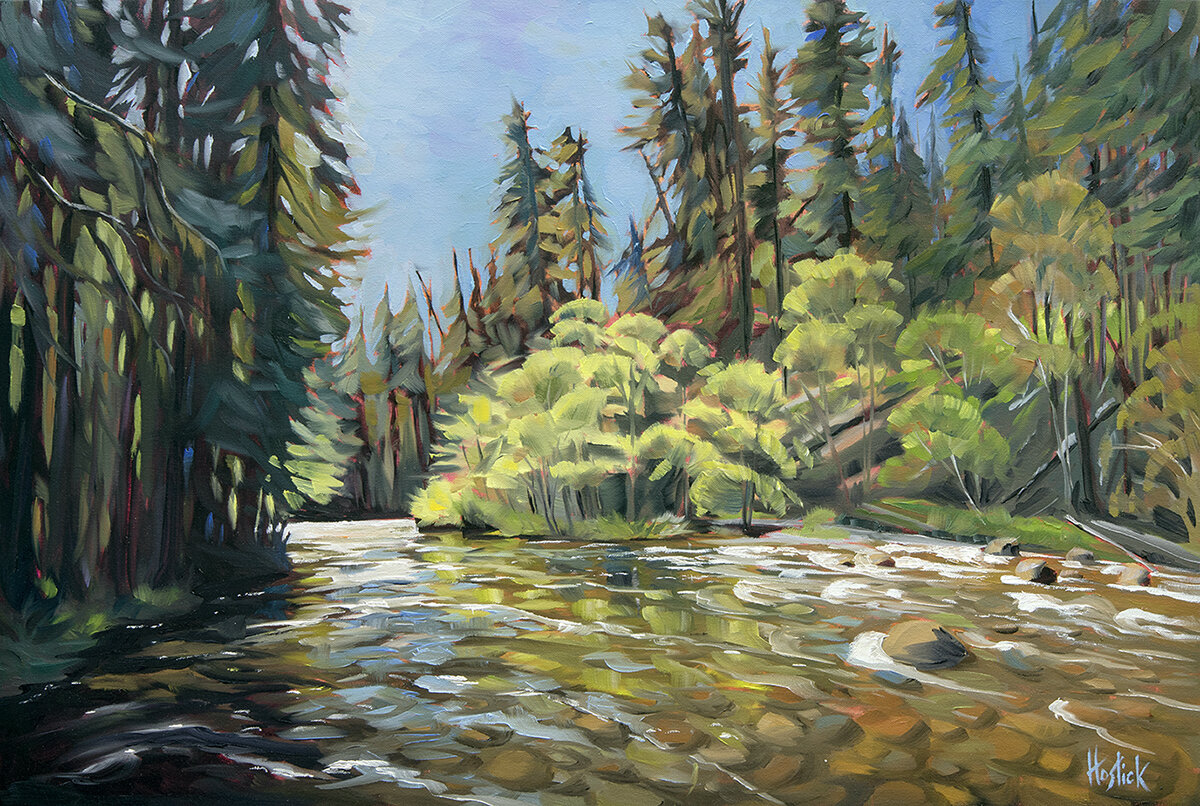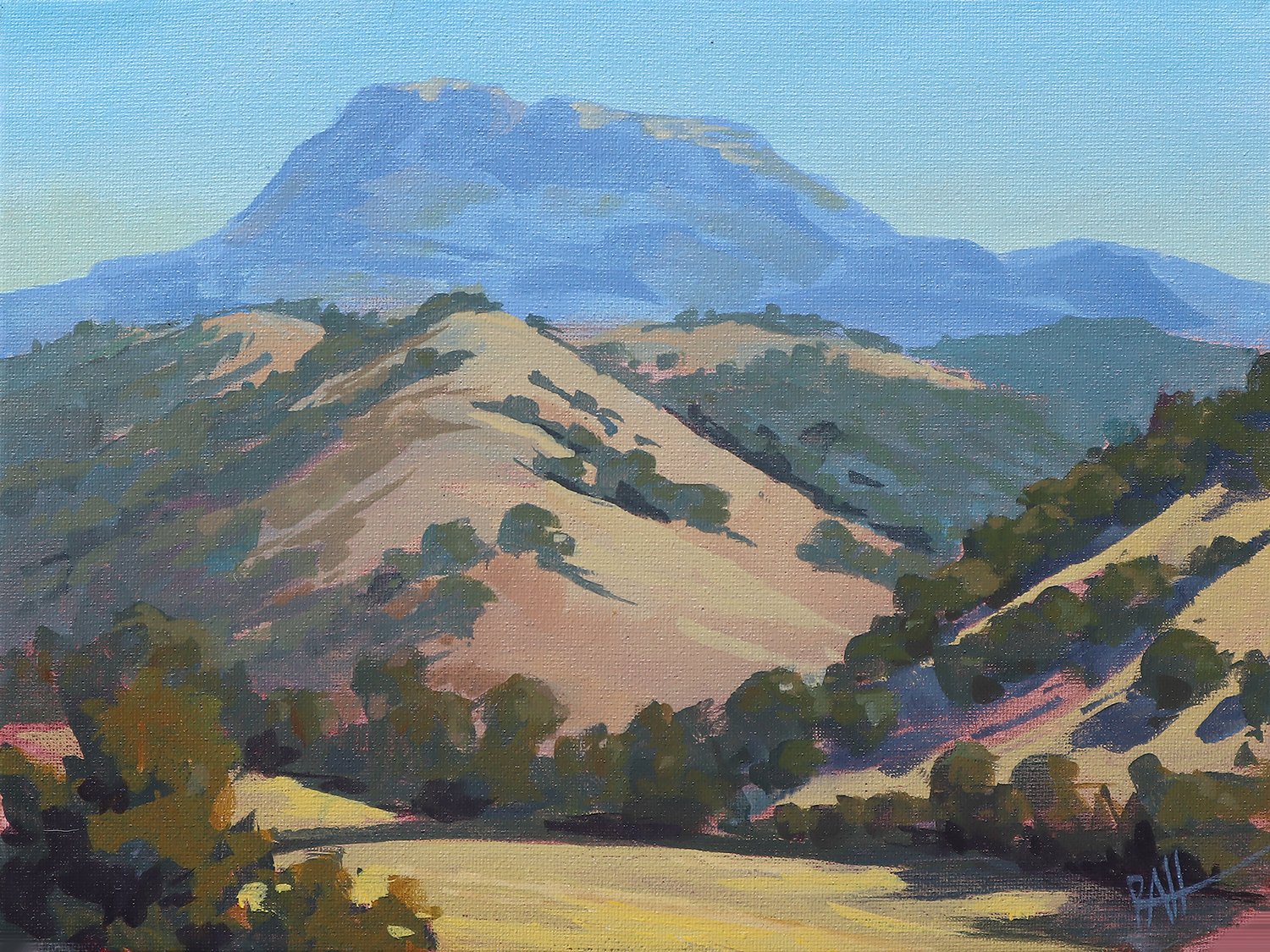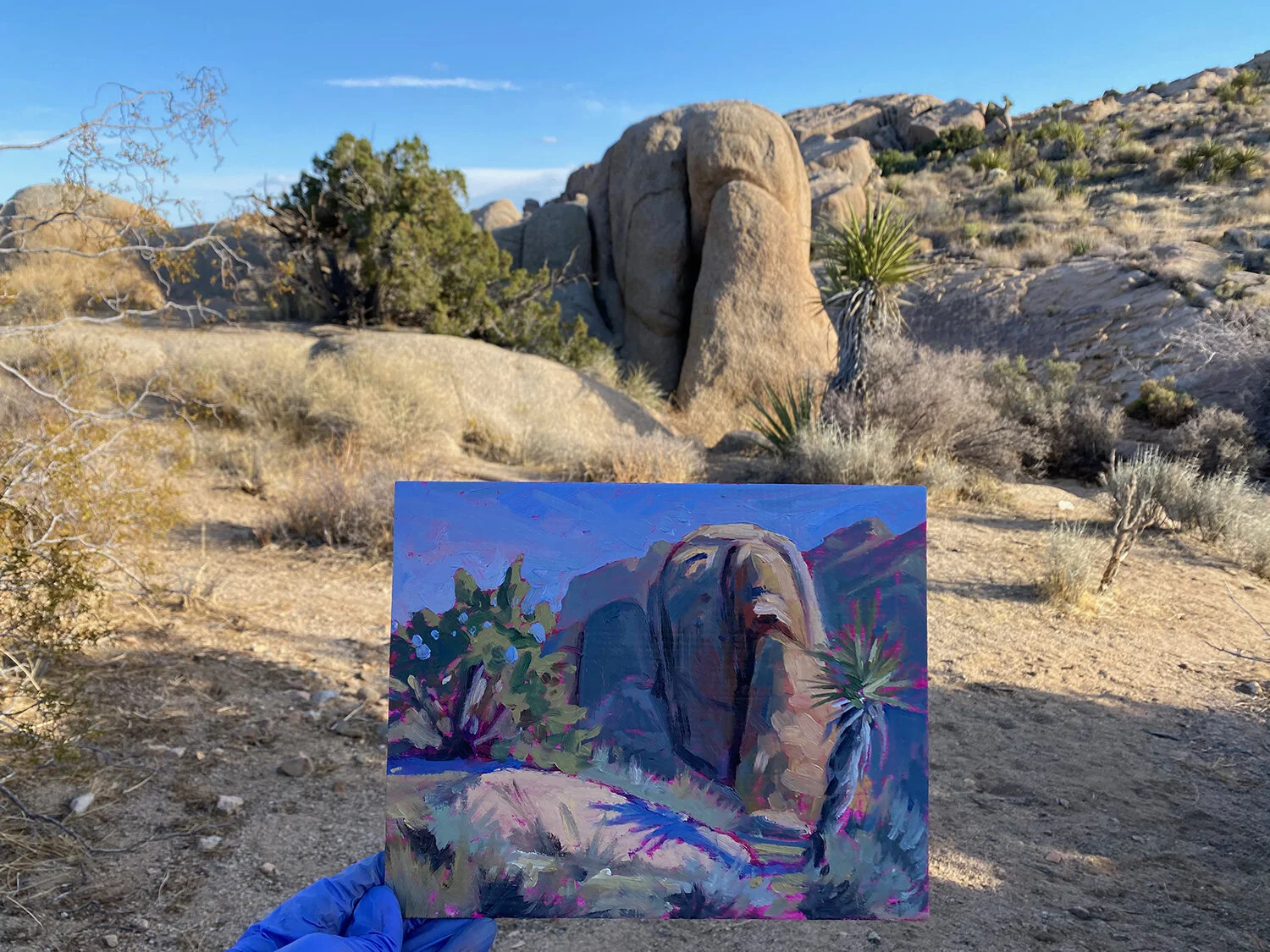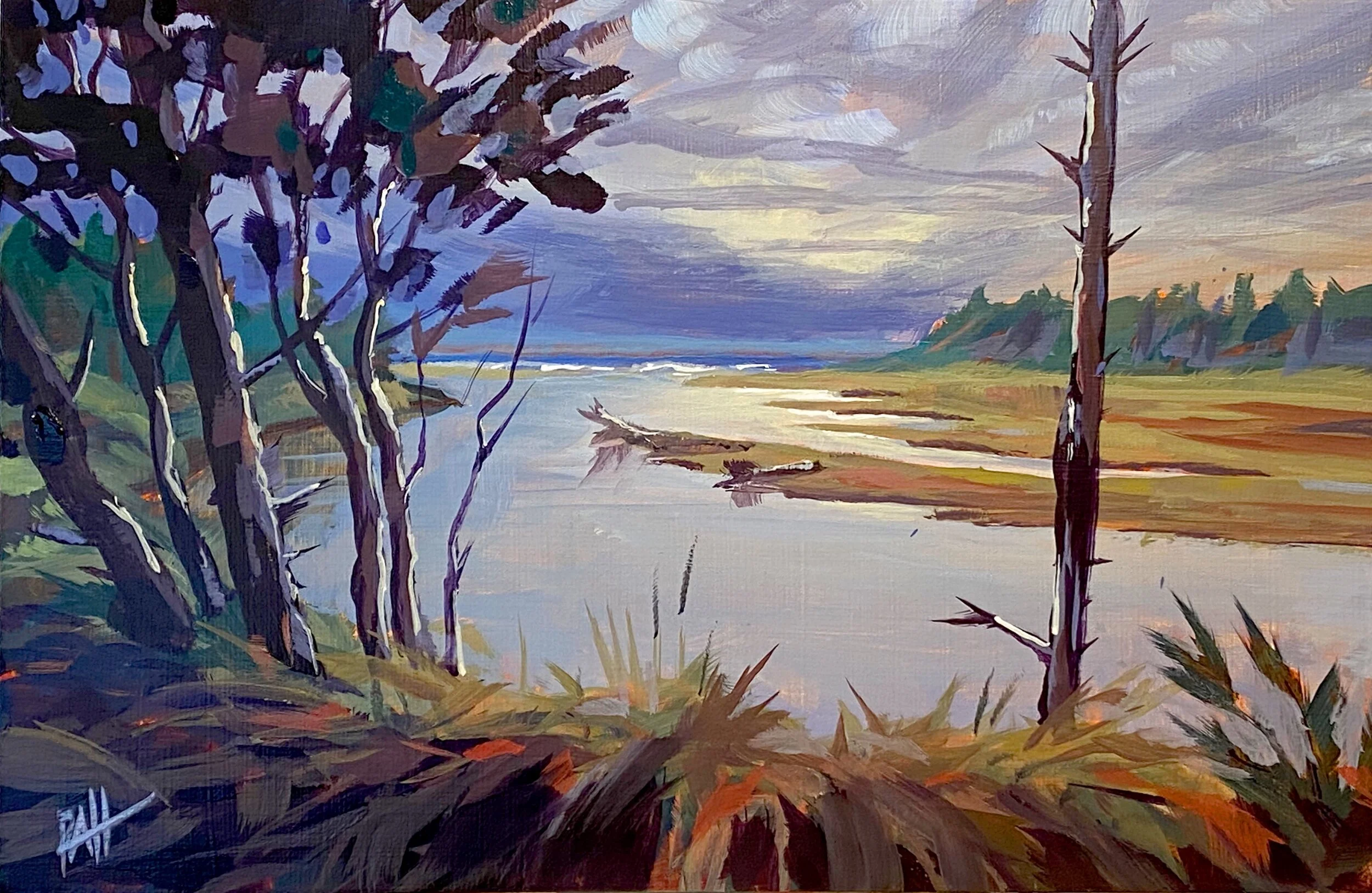I’m super excited to announce that next week we’ll be launching Wild & Scenic Rivers of Oregon, a special series of original artworks created in partnership with statewide nonprofit Oregon Wild. The campaign will kick off with a live webcast on Wednesday evening, November 11 at 6:00pm. Sign up here for this free event.
In the meantime, check out this video for a quick overview (3 min).
The idea is pretty simple: create original artworks to raise awareness and funds to support National Wild & Scenic River designation for a slate of amazing Oregon rivers. The series will include six original oil paintings featuring different rivers, all of which are candidates for Wild & Scenic designation, as well as limited edition prints of each painting. From artwork sales, I’ll be donating 25% directly to Oregon Wild to support efforts to help preserve these – and many other – wild Oregon rivers.
We’re hopeful that legislation to extend the National Wild & Scenic designation to more Oregon rivers will be introduced in congress soon. Our efforts will help raise awareness about the proposal, share information about what the Wild & Scenic designation means, and gather needed support to help pass the legislation.
Oregon Wild is a statewide nonprofit working to preserve Oregon’s famous natural heritage for over 45 years. Our wild rivers are an important part of that heritage. The National Wild & Scenic River act is a key piece of ongoing efforts Oregon Wild has supported over the years and is summarized nicely here.
In a nutshell, the designation aims to preserve our nation’s most pristine rivers in a wild state for the enjoyment of all Americans today and in the future. The act encourages all kinds of recreational uses Oregonians love – boating, fishing, hunting, hiking, camping and other activities that allow the river and surrounding forest to thrive. The protection extends from ¼ to ½ mile from the river to include pristine forests which are essential to the beauty and health of the rivers that flow through them.
I’m over the moon about being a part of this. I’ve spent many hundreds of blissful hours along Oregon rivers, pursuing all of those recreational activities and more, and so have five other generations of my family (including my kids). The idea of helping make sure that future generations can also have these experiences just feels good.
The best part is, the project is a way for lots of other people to help, too, while at the same time bringing the beauty of these rivers into our daily lives.
Did you know that just having artwork in our lives can boost our wellbeing? I’ll write more about that soon, but even though I’ve somehow felt that to be true for a long time, apparently the science backs it up. The same is true for images of nature. Research suggests that “just by viewing nature many aspects of human health and development can be markedly improved.” Not only that, but when you consider the pride of participation in something positive, something beyond ourselves, the project really starts to make sense.
Nature and art are especially powerful and welcome sources of wellbeing during times when we need it most. That has certainly been true for me as an artist, which is a big reason I’m so passionate about this work. And I’m hoping it will be true for other lovers of art and Oregon’s wild places.
It all started with a few conversations back in March around the time the pandemic broke out for real. Through the spring, we hunkered down like everyone else. Eventually, like squirrels emerging from our hollow trees, we got to work exploring some of the candidate rivers for Wild & Scenic designation.
Working with my Oregon Wild contact Chandra LeGue, author of the brand new and wonderfully visual book Oregon’s Ancient Forests: A Hiking Guide, we agreed on a list of rivers to showcase the effort. From among the list of possible National Wild & Scenic designation candidate rivers, our aim was to include geographic diversity from around the state as well as a mix of larger and smaller rivers. It was like choosing your favorite child – they’re all special for different reasons.
I spent many nights under the stars during this exploration. I traveled hundreds of miles, hiked dozens of miles, and did a fair amount of bushwhacking off trail searching for the essence of each river. Along the way, I saw deer and elk, foxes, marmots, ospreys, golden eagles, wild trout and all kinds of other creatures that thrive along these wild rivers.
As I alluded to in my last ArtJournal post, my goal was to find places that not only captured the beauty of each river, but also touched on some of its unique qualities. The rivers are so beautiful, you’d think it would be easy to show up and gather inspiration for a painting. The truth is a little more complicated.
I was looking for a “portrait of the wild” that included the river and surrounding forest in a single, compelling composition. It’s easy to do in-person – you’re immersed. But capturing both river and forest in a single frame is another matter. It requires the cooperation of weather, time of day, direction of river flow, sun angle, and finding stretches of water that are both beautiful (easy) and accessible (not so easy).
Because the paintings are so large and the qualities I’m after so fleeting, it would be extremely difficult to paint them on site. Many view angles are only achieved by perching precariously on rocks or logs, or by standing in the river itself. For that reason, although I do some plein air (painting outside on-location) studies, most of my work is completed in my studio using references I gather in the field. I’ve observed so much nature at this point that many of the painterly techniques for color and value flow from experience.
Artistically, I’m trying to express the feeling of being in the presence of nature using only the tools of paint and brush. To convey the freshness of a live experience, I paint energetically and intuitively. I apply brush strokes in patterns that suggest the elements of the subject – the more movement, the more dynamic the brush work.
Each painting contains a different set of patterns. I prefer to work wet-on-wet and focus entirely on painting each work until it’s complete, however long that may take – sometimes over several days.
I use a limited palette and mix most of my colors by hand. In my experience, the conditions of the moment already produce a wonderful color harmony. I try to retain that harmony in the works, whether it be bold sunshine and high contrast, or a complex mosaic of earth tones. At the same time, I apply some techniques to emphasize the composition, but always with deference to the subject.
This series is painted in oil on canvas. I used two different sizes depending on the scope of the scene.
In addition to the original works, I’m offering limited edition prints in two sizes with an optional frame. Because I wanted this series to be special and have lasting value for art lovers and collectors, everything we’re offering is put together locally where I can oversee the quality and process.
Prints are made with state-of-the art technology using archival inks and heavy, archival paper. Each painting is photographed in high-density, RAW format images to capture the texture of paint and canvas. Print proofs are color-corrected by hand to best match the original work.
For the optional frame, I’ve selected a contemporary, black frame made from solid wood. Frames are carefully proportioned to the golden mean of the print’s white border and inked area. Framed prints feature a premium, UV-blocking acrylic glazing for shipping safety and durability, which help preserve the brightness and color fastness.
The works will be officially released for sale on November 11, 2020 and can be purchased from me directly or through this website at robinhostick.com/wildrivers.
If it feels comfortable and appropriate, please help us by sharing this link to your networks. I hope to see you soon at the live webcast!






























